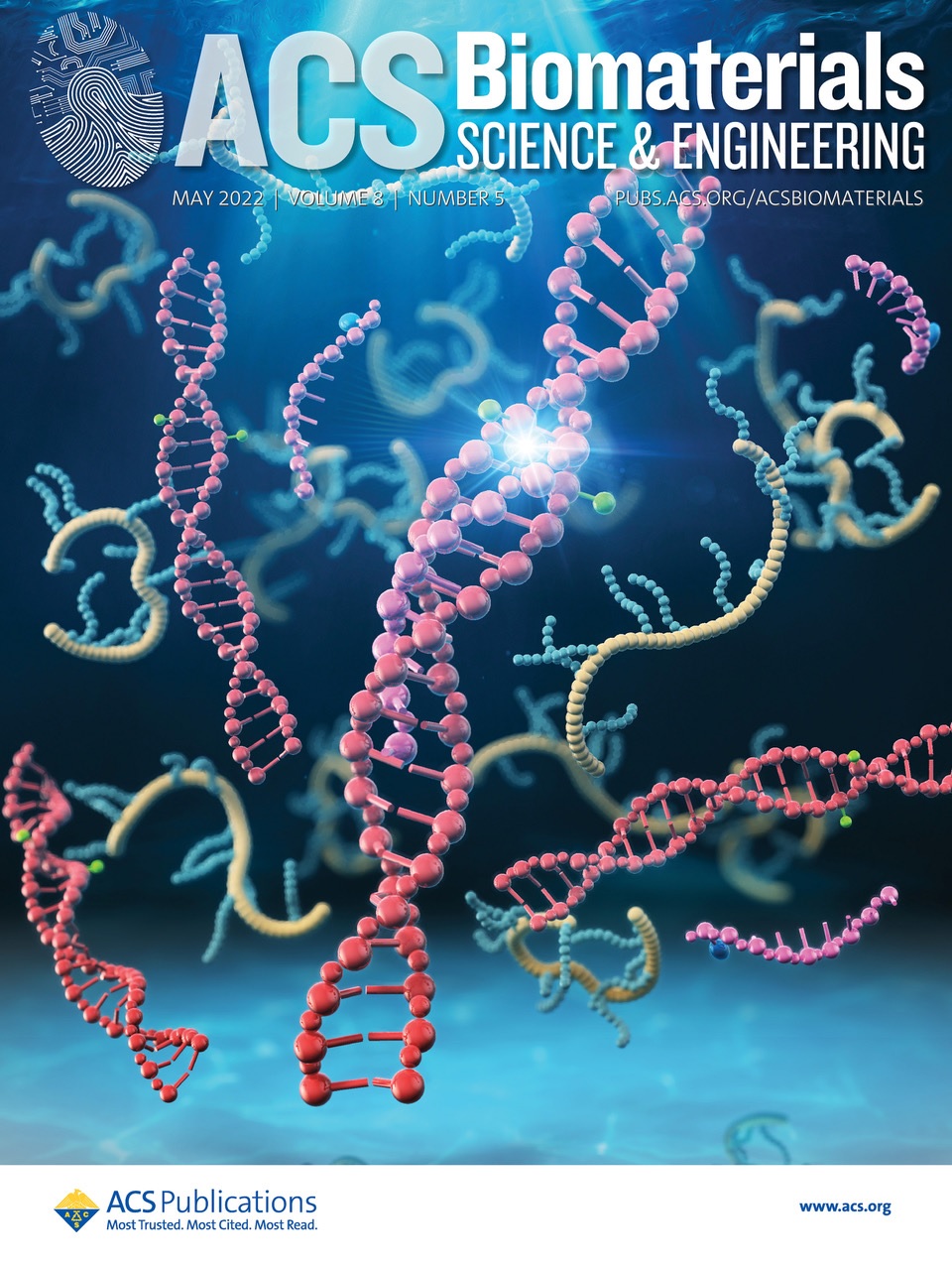Preconception depression reduces fertility: a couple-based prospective preconception cohort
IF 5.5
2区 医学
Q2 MATERIALS SCIENCE, BIOMATERIALS
引用次数: 0
Abstract
Is preconception depression associated with time to pregnancy (TTP) and infertility? Couples with preconception depression needed a longer time to become pregnant and exhibited an increased risk of infertility. Preconception depression in women contributes to impaired fertility in clinical populations. However, evidence from the general population—especially based on couples—is relatively scant. A couple-based prospective preconception cohort study was performed in 16 premarital examination centers between April 2019 and June 2021. The final analysis included 16,521 couples who tried to conceive for ≤6 months at enrollment. Patients with infertility were defined as those with a TTP ≥12 months and those who conceived through ART. Couples’ depression was assessed using the Patient Health Questionnaire-9 at baseline. Reproductive outcomes were obtained via telephone at 6 and 12 months after enrollment. Fertility odds ratios (FORs) and infertility risk ratios (RRs) in different preconception depression groups were analysed using the Cox proportional-hazard models and logistic regression, respectively. Of the 16,521 couples analyzed, 10,834 (65.6%) and 746 (4.5%) couples achieved pregnancy within the first 6 months and between the 6th and 12th months, respectively. The median (P25, P75) TTP was 3.0 (2.0, 6.0) months. The infertility rate was 13.01%. After adjusting for potential confounders, in the individual-specific analyses, we found that preconception depression in women was significantly related to reduced odds of fertility (FOR = 0.947, 95% CI: 0.908–0.988), and preconception depression in either men or women was associated with an increased risk of infertility (women: RR = 1.212, 95%CI: 1.076–1.366; men: RR = 1.214, 95%CI: 1.068–1.381); in the couple-based analyses, we found that—compared to couples where neither partner had depression—the couples where both partners had depression exhibited reduced fertility (adjusted FOR = 0.904, 95%CI: 0.838–0.975). The risk of infertility in the group where only the woman had depression and both partners had depression increased by 17.8% (RR = 1.178, 95%CI: 1.026–1.353) and 46.9% (RR = 1.469, 95%CI: 1.203–1.793), respectively. Reporting and recall bias were unavoidable in this large epidemiological study. Some residual confounding factors—such as the use of anti-depressants and other medications, sexual habits, and prior depressive and anxiety symptoms—remain unaddressed. We used a cut-off score of 5 to define depression, which is lower than prior studies. Finally, we assessed depression only at baseline, therefore we could not detect effects of temporal changes in depression on fertility. This couple-based study indicated that preconception depression in individuals and couples negatively impacts couples’ fertility. Early detection and intervention of depression to improve fertility should focus on both sexes. This work was supported by grants from the National Natural Science Foundation of China (No. 82273638) and the National Key Research and Development Program of China (No. 2018YFC1004201). All authors declare no conflicts of interest. N/A.孕前抑郁症会降低生育能力:基于夫妇的前瞻性孕前队列研究
孕前抑郁与怀孕时间(TTP)和不孕症有关吗? 患有孕前抑郁症的夫妇需要更长的时间才能怀孕,而且不孕的风险也会增加。 在临床人群中,妇女的孕前抑郁会导致生育能力受损。然而,来自普通人群的证据--尤其是基于夫妇的证据--相对较少。 2019 年 4 月至 2021 年 6 月期间,在 16 个婚前检查中心进行了一项基于夫妇的前瞻性孕前队列研究。最终的分析包括了16521对在入组时尝试怀孕≤6个月的夫妇。不孕症患者被定义为TTP≥12个月的患者和通过抗逆转录病毒疗法受孕的患者。 基线时使用患者健康问卷-9对夫妇抑郁情况进行评估。在入组后 6 个月和 12 个月,通过电话了解生殖结果。采用 Cox 比例危险模型和逻辑回归分别分析了不同孕前抑郁组的生育几率(FOR)和不育风险比(RR)。 在分析的16521对夫妇中,分别有10834对(65.6%)和746对(4.5%)夫妇在头6个月内和第6至12个月内怀孕。中位(P25,P75)TTP 为 3.0(2.0,6.0)个月。不孕率为 13.01%。在对潜在的混杂因素进行调整后,我们在针对个体的分析中发现,女性的孕前抑郁与生育几率降低显著相关(FOR = 0.947,95% CI:0.908-0.988),而男性或女性的孕前抑郁与不孕风险增加相关(女性:RR = 1.212,95%CI:1.076-1.366;男性:RR = 1.214,95%CI:1.068-1.381);在基于夫妇的分析中,我们发现,与夫妇双方均无抑郁症的夫妇相比,夫妇双方均有抑郁症的夫妇生育率降低(调整后的FOR = 0.904,95%CI:0.838-0.975)。在只有女性患有抑郁症和伴侣双方都患有抑郁症的组别中,不育风险分别增加了17.8%(RR = 1.178,95%CI:1.026-1.353)和46.9%(RR = 1.469,95%CI:1.203-1.793)。 在这项大型流行病学研究中,报告偏差和回忆偏差是不可避免的。一些残留的混杂因素--如抗抑郁药和其他药物的使用、性习惯以及之前的抑郁和焦虑症状--仍未得到解决。我们使用 5 分的临界值来定义抑郁,这比之前的研究要低。最后,我们只在基线时评估抑郁,因此无法检测抑郁的时间变化对生育的影响。 这项以夫妇为基础的研究表明,个人和夫妇的孕前抑郁会对夫妇的生育能力产生负面影响。为提高生育能力,应重点关注男女双方,及早发现和干预抑郁症。 本研究得到了国家自然科学基金(编号:82273638)和国家重点研发计划(编号:2018YFC1004201)的资助。所有作者声明无利益冲突。 不适用。
本文章由计算机程序翻译,如有差异,请以英文原文为准。
求助全文
约1分钟内获得全文
求助全文
来源期刊

ACS Biomaterials Science & Engineering
Materials Science-Biomaterials
CiteScore
10.30
自引率
3.40%
发文量
413
期刊介绍:
ACS Biomaterials Science & Engineering is the leading journal in the field of biomaterials, serving as an international forum for publishing cutting-edge research and innovative ideas on a broad range of topics:
Applications and Health – implantable tissues and devices, prosthesis, health risks, toxicology
Bio-interactions and Bio-compatibility – material-biology interactions, chemical/morphological/structural communication, mechanobiology, signaling and biological responses, immuno-engineering, calcification, coatings, corrosion and degradation of biomaterials and devices, biophysical regulation of cell functions
Characterization, Synthesis, and Modification – new biomaterials, bioinspired and biomimetic approaches to biomaterials, exploiting structural hierarchy and architectural control, combinatorial strategies for biomaterials discovery, genetic biomaterials design, synthetic biology, new composite systems, bionics, polymer synthesis
Controlled Release and Delivery Systems – biomaterial-based drug and gene delivery, bio-responsive delivery of regulatory molecules, pharmaceutical engineering
Healthcare Advances – clinical translation, regulatory issues, patient safety, emerging trends
Imaging and Diagnostics – imaging agents and probes, theranostics, biosensors, monitoring
Manufacturing and Technology – 3D printing, inks, organ-on-a-chip, bioreactor/perfusion systems, microdevices, BioMEMS, optics and electronics interfaces with biomaterials, systems integration
Modeling and Informatics Tools – scaling methods to guide biomaterial design, predictive algorithms for structure-function, biomechanics, integrating bioinformatics with biomaterials discovery, metabolomics in the context of biomaterials
Tissue Engineering and Regenerative Medicine – basic and applied studies, cell therapies, scaffolds, vascularization, bioartificial organs, transplantation and functionality, cellular agriculture
 求助内容:
求助内容: 应助结果提醒方式:
应助结果提醒方式:


